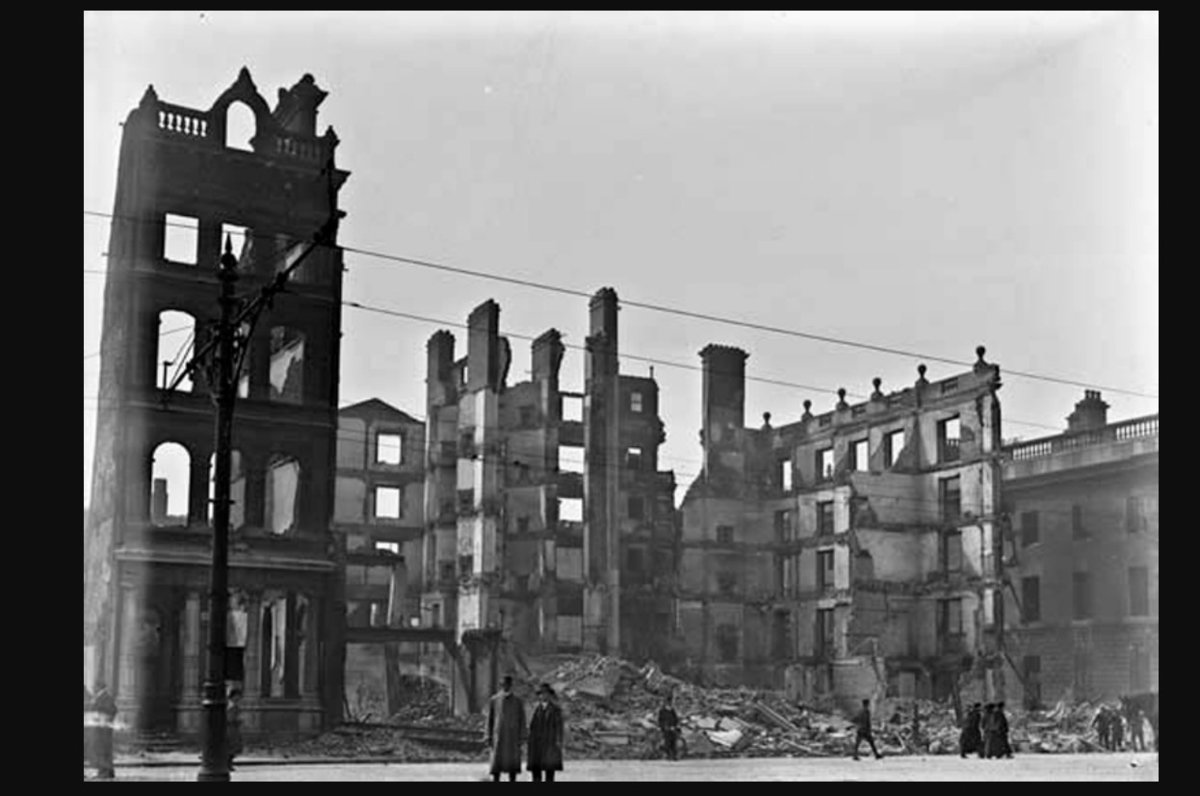
All that remained of Dublin’s Metropole Hotel, beside the General Post Office on Sackville Street (now O’Connell Street), after the Easter Rising, 1916. A May of 1916 photo now in the National Library of Ireland.
We are currently in the midst of Ireland’s “Decade of Centenaries”, a period which commemorates the Third Home Rule Bill, World War I, the Easter Rising, the Irish War of Independence, partition and creation of the Northern Ireland state, and the Irish Civil War.
The Easter Rising, which began on April 24 1916 – which then fell on Easter Monday – took place in the middle of one of the worst wars the world had yet seen, and at a time when the allied powers were under increased stain and pressure. How both events are tied to one another has meant that Irish participation in World War I has, until very recently, been surrounded by a form of “collective amnesia”. This is principally because Irish support for the war does not sit well with an identity characterised by Irish resistance to British repression. But this perspective tends to ignore the fact that around 200,000 Irishmen served in the British army during World War I.
The centenary of the Easter Rising is a defining moment in the history of the Irish Republic. We do not intend to take away from that fact. But the events of Easter 1916 already have a high degree of myth surrounding them and these events risk being hijacked for political gain. Members of dissident republican groups frequently claim some sort of historical legitimacy from the legacy of the rising. So it’s good to remind ourselves how World War I fostered the events of Easter 1916.
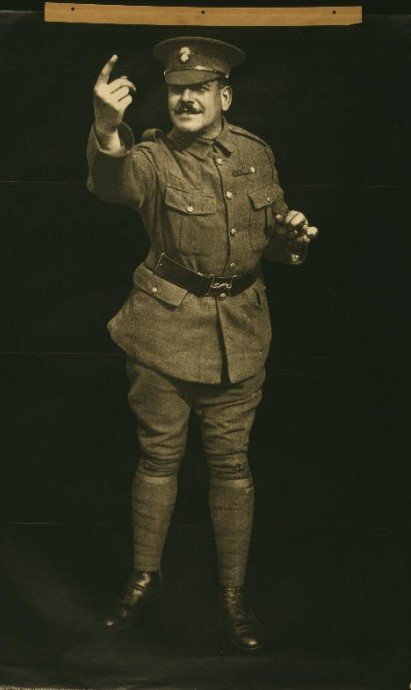
A just cause?
As historian Roy Foster describes, the Easter Rising was staged by a “minority of a minority”. Mainstream Irish nationalists, led by John Redmond, had supported the British war effort. Redmond saw the British war effort as a just cause and nationalists made much of the “rape of Belgium” by German forces, identifying as they did with a small, independent, Catholic state. While this support varied regionally, it’s worth noting that Irish Catholics and Protestants living in Belfast were as likely as each other to enlist in the British army. Indeed, the Irish National Volunteers, a paramilitary group set up to support Home Rule, provided the bulk of recruits for the 16th (Irish) Division.
But Redmond’s policy did not receive uniform support within nationalist ranks: a number of MPs in his own party were rather lukewarm in their support. The first major challenge to his authority came in late September 1914, by which time the Irish National Volunteers numbered around 180,000 men. A splinter group of around 12,000 broke away from Redmond into an organisation known as the Irish Volunteers. This group, led by Eoin MacNeill, believed that Irish Volunteers should not seek service under a “foreign government”. But MacNeill, and most of his supporters, should not be regarded as hot blooded revolutionaries. For MacNeill, a rebellion would only be justified if and only if the British government tried to suppress the Irish Volunteers, or attempted to enforce conscription in Ireland.
But there was a revolutionary element within the Irish Volunteer movement. This was the Irish Republican Brotherhood (also known as the Fenian movement) led by Tom Clarke. This group believed that “England’s difficulty is Ireland’s opportunity” and held that it was vital to stage a rebellion during World War I while British troops were committed elsewhere. Another key element in the rising was James Connolly’s Irish Citizen Army (ICA), a socialist movement which numbered around 200 men by April 1916.
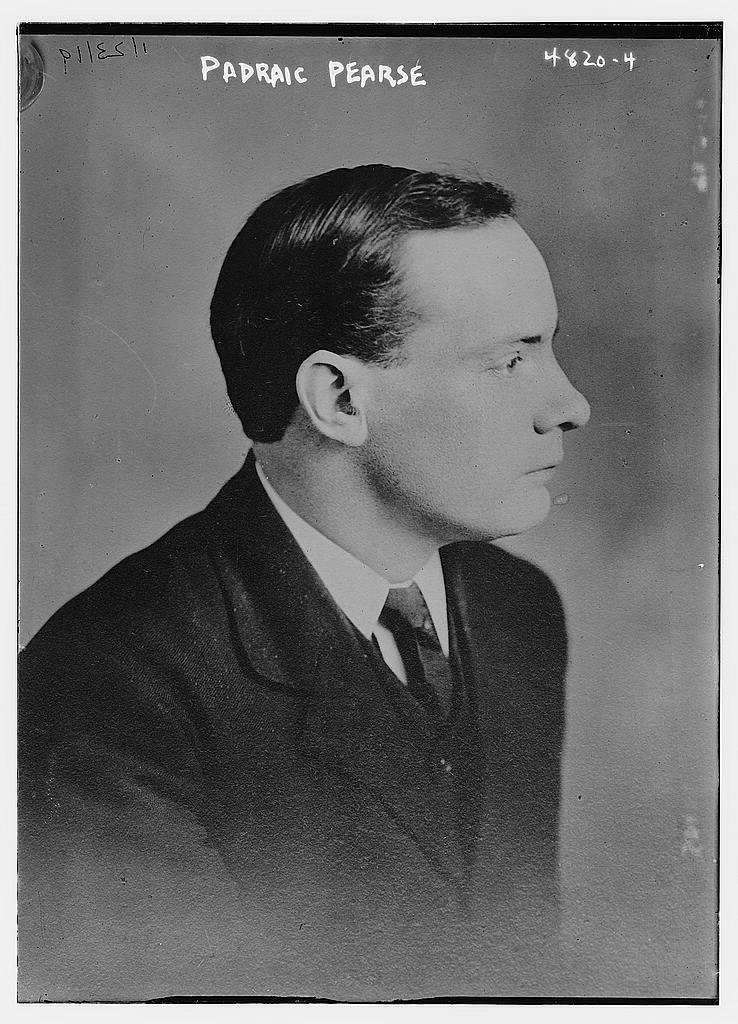
When the cat’s away
The revolutionary element within the Irish Volunteers had planned the Rising for Easter Sunday 1916 (April 23) when, under cover of an Irish Volunteer exercise in Dublin, a rebellion would be launched, bringing in the whole of the Irish Volunteer movement in Dublin (around 4,000 men) and acting as the signal for a national uprising. But MacNeill discovered this conspiracy and issued a countermanding order which meant that, when the Easter Rising commenced on Easter Monday in 1916, barely 1,000 Irish Volunteers turned out, along with 200 members of the ICA. Not one of the signatories of the proclamation of the republic had stood in a local or general election in Ireland, much less secured any mandate.
The Rising caught British forces in Dublin unawares. But reserve battalions of the Irish Regiments of the British Army in the Dublin garrison quickly mobilised to contain it before major reinforcements arrived from England. It was Captain JC Bowen-Colthurst, an Irishman, who was responsible for some of the worst British Army atrocities of Easter week 1916, ordering the shooting at least four unarmed civilians.
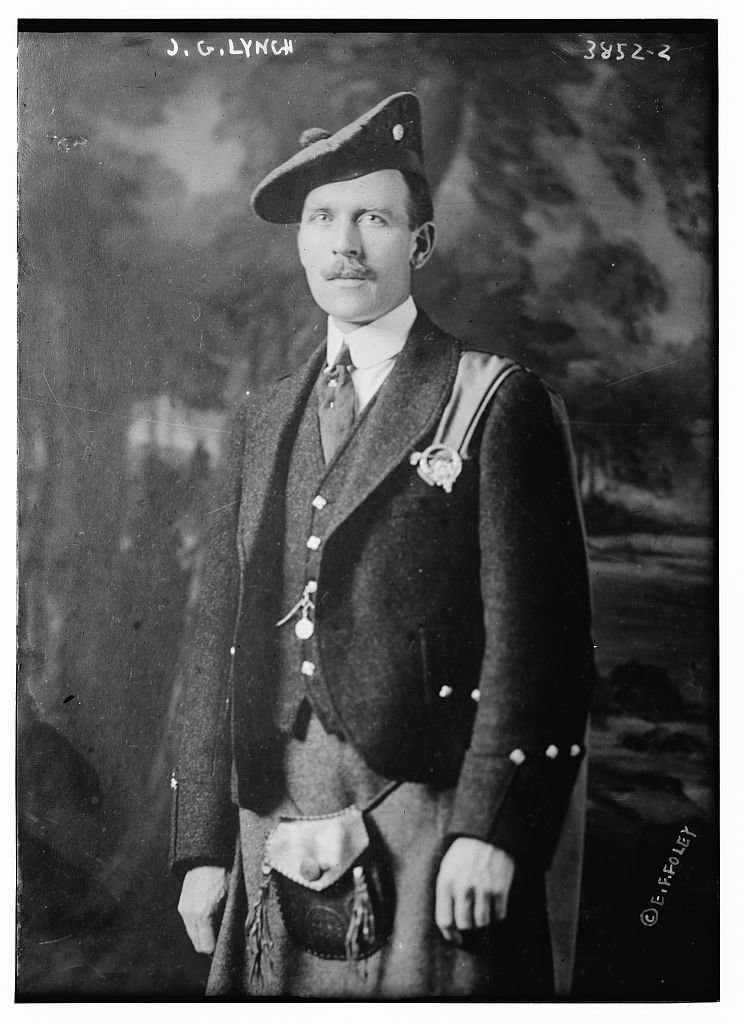
During the rebellion itself rebels received little support from the Dublin population as a whole. The decision to seize the General Post Office meant that rebels were confronted by crowds of “separation women”; wives of serving soldiers who received an allowance paid through the Post Office, who made their views of the rebels clear. When the rebels surrendered on April 29 they were jeered and spat on by crowds, who held them responsible for the destruction of central Dublin, which had been shelled by the British forces.
But the British government’s botched handling of the aftermath of the Rising, with secret courts martial, a prolonging of martial law and execution of 15 rebels identified as ringleaders, soon served to change Irish public opinion. And in the 1918 general election, Sinn Féin, which identified itself closely with the actions of the rebels of 1916, swept the board outside the six north-eastern counties of Ireland.
This story appeared first in The Conversation on April 21, 2016. The Conversation is a community of more than 135,400 academics and researchers from 4,192 institutions.
Read Next: The Crag Rats: How a Band of Outdoor Hobbyists Transformed Mountain Rescue in the Pacific Northwest
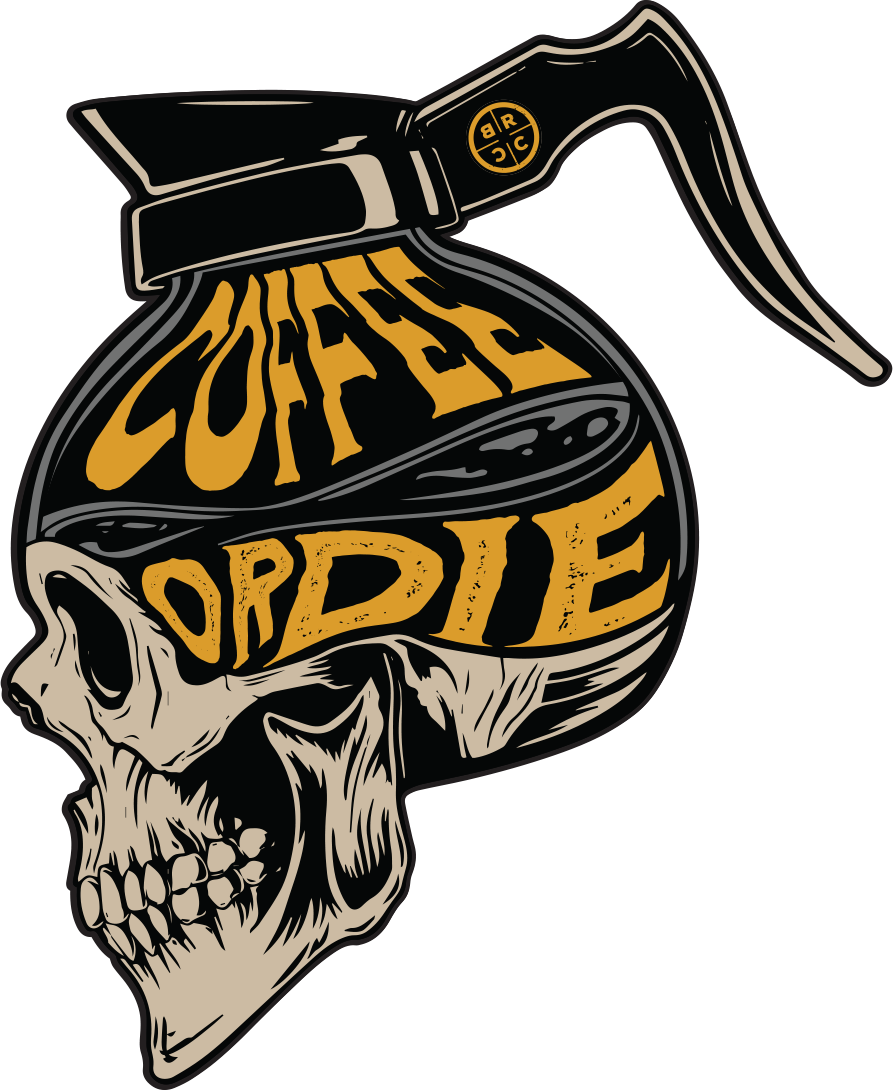
Coffee or Die is Black Rifle Coffee Company’s online lifestyle magazine. Launched in June 2018, the magazine covers a variety of topics that generally focus on the people, places, or things that are interesting, entertaining, or informative to America’s coffee drinkers — often going to dangerous or austere locations to report those stories.
BRCC and Bad Moon Print Press team up for an exclusive, limited-edition T-shirt design!
BRCC partners with Team Room Design for an exclusive T-shirt release!
Thirty Seconds Out has partnered with BRCC for an exclusive shirt design invoking the God of Winter.
Lucas O'Hara of Grizzly Forge has teamed up with BRCC for a badass, exclusive Shirt Club T-shirt design featuring his most popular knife and tiomahawk.
Coffee or Die sits down with one of the graphic designers behind Black Rifle Coffee's signature look and vibe.
Biden will award the Medal of Honor to a Vietnam War Army helicopter pilot who risked his life to save a reconnaissance team from almost certain death.
Ever wonder how much Jack Mandaville would f*ck sh*t up if he went back in time? The American Revolution didn't even see him coming.
A nearly 200-year-old West Point time capsule that at first appeared to yield little more than dust contains hidden treasure, the US Military Academy said.












